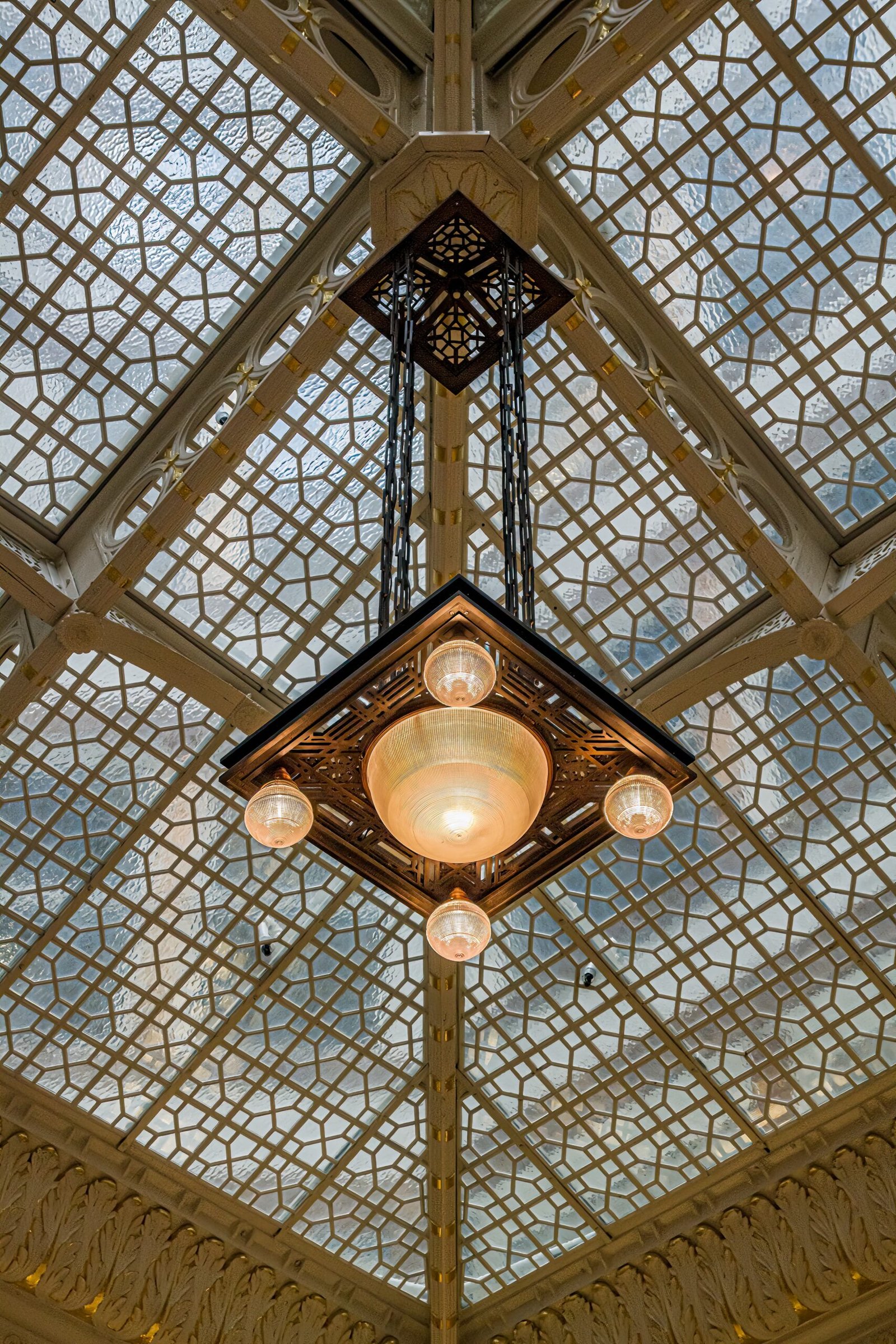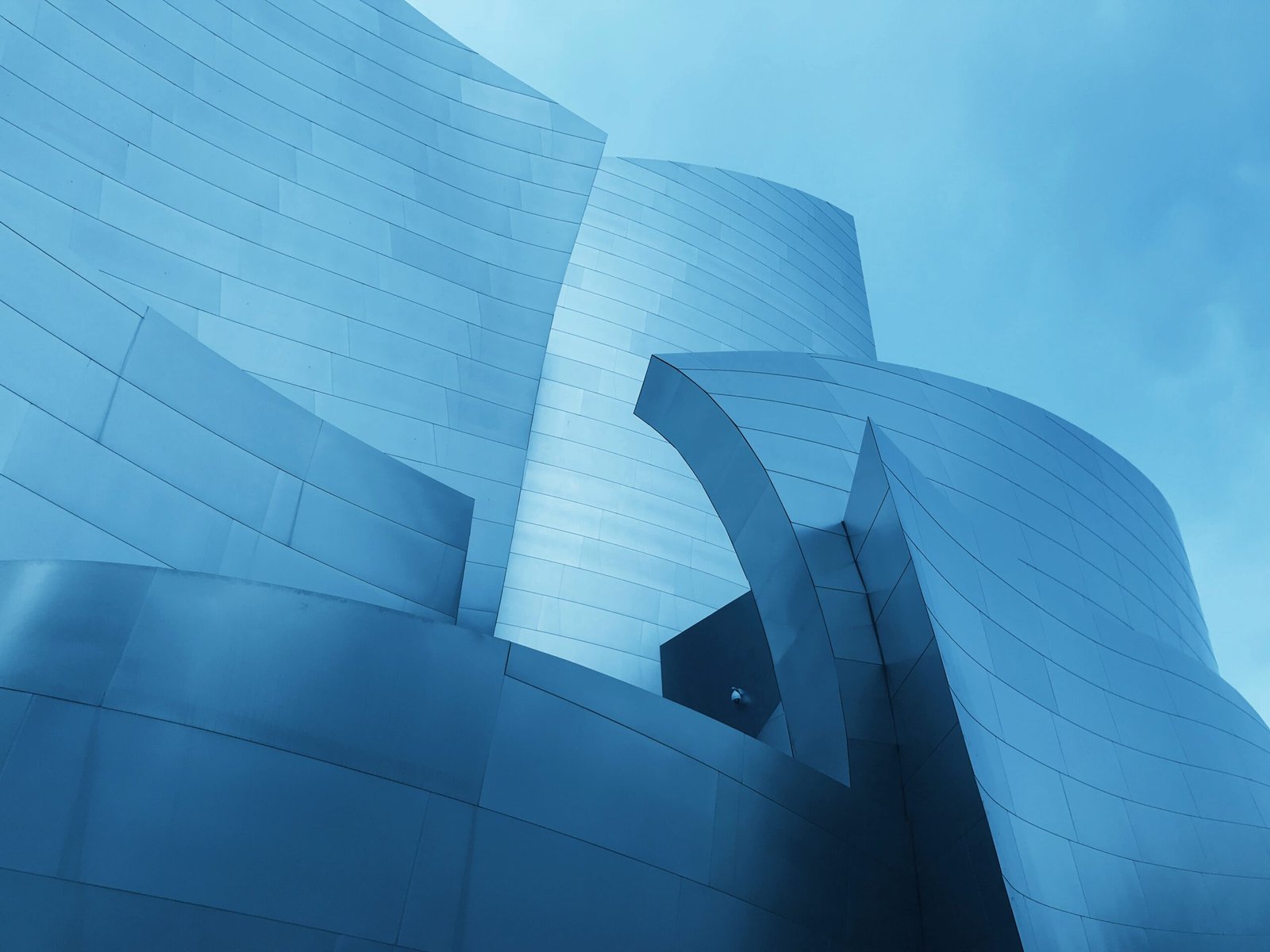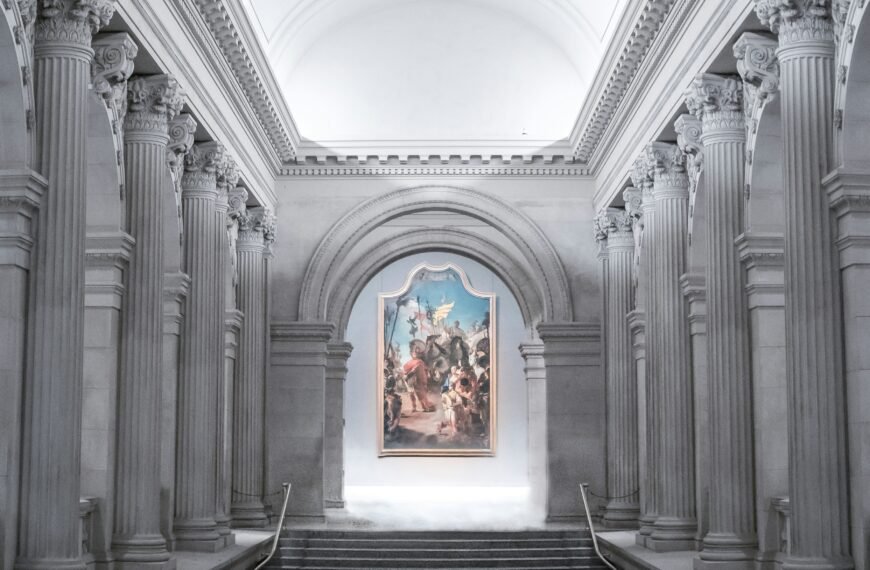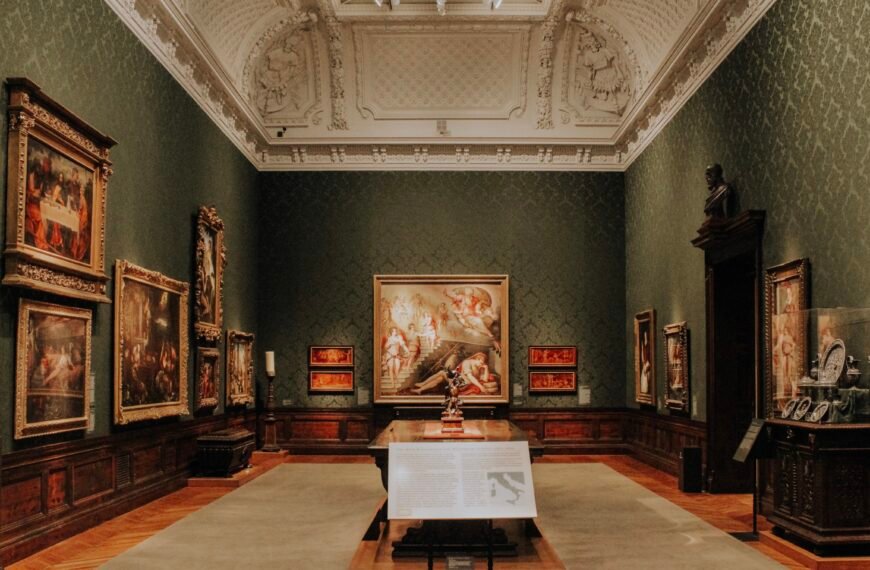Have you ever wondered about the creative genius behind the iconic Guggenheim Museum? This article reveals the enigmatic architect responsible for the museum’s unique design and grandeur. Step into the world of architecture and discover the visionary mind that brought the Guggenheim Museum to life.
The Guggenheim Museum
A brief overview
The Guggenheim Museum, located in New York City, is one of the most iconic and renowned art museums in the world. Its distinctive architectural design has made it a beloved landmark, drawing millions of visitors each year. With a collection of over 7,000 contemporary artworks, the Guggenheim Museum offers a truly unique experience for art enthusiasts.
Importance in the art world
The Guggenheim Museum holds a significant place in the art world due to its commitment to showcasing contemporary art and its innovative approach to exhibition design. Unlike traditional museums, the Guggenheim aims to create a dynamic and immersive experience for visitors, encouraging them to explore the artworks in a non-linear manner. This approach challenges the traditional notion of art presentation and pushes the boundaries of what a museum can be.
Architectural significance
One cannot discuss the Guggenheim Museum without acknowledging its breathtaking architectural design. Designed by the legendary architect Frank Lloyd Wright, the museum stands as a masterpiece of modern architecture. Its distinctive spiral shape and white, curved facade make it instantly recognizable. The Guggenheim’s design has not only become synonymous with the museum itself but has also become an iconic symbol of New York City.
Frank Lloyd Wright
Early life and career
Frank Lloyd Wright, born in 1867, was an American architect known for his groundbreaking designs and philosophies. Growing up in Wisconsin, he developed an early interest in architecture and went on to study at the University of Wisconsin. Wright’s career spanned over seven decades, during which he designed numerous iconic buildings, including private residences, public buildings, and, of course, the Guggenheim Museum.
The commission
The commission to design the Guggenheim Museum came to Frank Lloyd Wright in 1943. The wealthy philanthropist Solomon R. Guggenheim, along with his advisor, Hilla Rebay, had envisioned a museum that would challenge the conventional forms of art exhibition. They believed that Wright was the perfect architect to transform their vision into reality.
Design philosophy
Frank Lloyd Wright approached the design of the Guggenheim Museum with his signature organic architectural style. He believed in creating harmony between the natural surroundings and the built environment. With the Guggenheim, he sought to create a space that seamlessly integrated art, architecture, and nature, blurring the boundaries between them.
Challenges faced
Designing the Guggenheim Museum came with its fair share of challenges. One of the main obstacles Wright faced was the unconventional shape of the building. The museum’s spiraling ramp presented engineering complexities that required innovative solutions. Additionally, the location of the museum, in the heart of Manhattan, posed logistical challenges during construction.
Construction and completion
Construction of the Guggenheim Museum began in 1956 and took six years to complete. The innovative construction techniques employed by Wright and his team allowed for the realization of his vision. Finally, in 1959, the Guggenheim Museum opened its doors to the public, showcasing an architectural marvel that would forever revolutionize museum design.

Solomon R. Guggenheim
The museum’s namesake
Solomon R. Guggenheim, born in 1861, was an American businessman and art collector. He amassed a vast collection of modern and contemporary artworks, showcasing a keen eye for groundbreaking and unconventional art. Guggenheim’s passion for art and his desire to create a space to exhibit his collection led to the establishment of the Guggenheim Museum.
The Guggenheim Foundation
To realize his dream of a museum, Solomon R. Guggenheim established the Solomon R. Guggenheim Foundation in 1937. The foundation aimed to promote the understanding and appreciation of contemporary art through various initiatives, including the establishment of the Guggenheim Museum. Today, the foundation continues to support the arts and operates several Guggenheim museums worldwide.
Collaboration with Frank Lloyd Wright
Solomon R. Guggenheim’s collaboration with Frank Lloyd Wright was a meeting of artistic minds. Guggenheim’s vision for a nontraditional art space aligned perfectly with Wright’s design philosophy. This partnership resulted in the creation of a museum that would break free from the confines of traditional exhibition spaces and provide a new way to experience art.
The Wright Design
Inspiration and influences
Frank Lloyd Wright drew inspiration from diverse sources while designing the Guggenheim Museum. His travels to various countries, including Egypt and Mexico, exposed him to different architectural styles and forms. He also drew influence from the works of modernist architects such as Le Corbusier. These influences, combined with his own unique style, shaped the design of the museum.
Innovative design features
The Guggenheim Museum’s design incorporates several innovative features that set it apart from traditional museums. Instead of separate exhibition rooms, Wright created a continuous, spiraling ramp that allows visitors to experience the artworks from multiple perspectives. This design feature encourages a more dynamic and interactive engagement with the art.
The ramp concept
The landmark ramp concept is one of the most defining features of the Guggenheim Museum. The ramp, gently sloping upward, guides visitors on a journey through the different levels of the museum, gradually revealing the artwork as they ascend. This innovative circulation pattern ensures that visitors encounter each artwork in a deliberate and curated manner.
Materials and construction techniques
In line with his organic architectural style, Frank Lloyd Wright carefully selected the materials for the Guggenheim Museum. The white, curved facade is made of reinforced concrete, giving the building a sculptural quality. The use of natural light, thanks to the skylight at the top of the atrium, enhances the viewing experience and showcases the artworks beautifully.

The Museum’s Concept
A nontraditional space
The Guggenheim Museum’s concept challenged the traditional notion of a museum as a static, rectangular building. Instead, Wright envisioned a dynamic and fluid exhibition space that would awaken the senses and encourage a deeper connection with the art. The museum’s spiral design and open floor plan provided visitors with a sense of freedom and discovery.
Integrated art and architecture
Wright aimed to create a seamless integration of art and architecture within the museum. He believed that each artwork should be viewed in its intended spatial relationship, and the design of the museum was crucial in achieving this. By carefully curating the placement and arrangement of artworks along the spiral ramp, Wright ensured that the art and the architecture harmoniously coexisted.
Unique circulation pattern
The Guggenheim Museum’s circulation pattern is a stark departure from traditional museums. Instead of distinct galleries with separate entrances and exits, Wright created a continuous, upward-sloping ramp that allows visitors to experience the entire collection in a single, uninterrupted journey. This unique circulation pattern creates a sense of exploration and discovery, as visitors are guided through the museum’s various levels.
Structural Challenges
Unconventional shape
The Guggenheim Museum’s unconventional shape presented significant structural challenges during its design and construction. The spiral ramp, with its continuous curve, required innovative engineering solutions to ensure stability and safety. Wright’s collaboration with structural engineers resulted in a unique structural system that effectively supported the building’s complex form.
Engineering complexities
The engineering complexities of the Guggenheim Museum’s design cannot be overstated. The spiraling ramp, gravity-defying cantilevered sections, and the building’s unique shape demanded meticulous structural analysis and calculations. The engineers had to find innovative ways to distribute the load and maintain the building’s structural integrity.
Reinforcement methods
To reinforce the Guggenheim Museum’s unconventional shape, various methods were employed. The building features a reinforced concrete shell, which provides stability and resistance against external forces. Additionally, steel reinforcement was strategically placed within the building to enhance its structural strength and rigidity.
Foundation design
The design of the museum’s foundation was of utmost importance to ensure the stability and performance of the building. Given the complex shape and weight distribution of the Guggenheim, the foundation had to be carefully designed to support the structure and prevent any settling or movement. Advanced geotechnical engineering techniques were utilized to create a solid foundation that could withstand the loads imposed by the building.

Controversies and Criticisms
Initial public reactions
When the Guggenheim Museum was unveiled to the public, it sparked mixed reactions. Some praised its innovative design and its departure from traditional museum architecture, heralding it as a bold and visionary work. However, others were skeptical and even critical of the design, viewing it as an architectural oddity that clashed with the surrounding buildings.
Functionality criticisms
One of the main criticisms of the Guggenheim Museum was its functionality as an art exhibition space. Some argued that the spiral ramp design hindered the proper viewing of artworks, as it did not allow for traditional gallery spaces with controlled lighting and wall space. Despite these criticisms, the Guggenheim’s unique design challenged the status quo and revolutionized museum architecture.
Adaptability challenges
The Guggenheim Museum’s design posed challenges when it came to adapting the space for changing exhibition needs. Its continuous ramp design made it difficult to modify the layout to accommodate larger or differently shaped artworks. However, the museum has since found innovative solutions to overcome these challenges, including the use of innovative display systems and temporary exhibition structures.
Maintenance issues
Maintaining the integrity of the Guggenheim Museum’s unique design has also been a challenge over the years. The curved facade requires special attention and restoration to preserve its pristine appearance. Additionally, the continuous ramp necessitates careful maintenance and cleaning to ensure a pleasant experience for visitors. Despite these challenges, the museum’s staff diligently works to maintain the building’s architectural and aesthetic qualities.
Legacy and Impact
Influence on modern architecture
The Guggenheim Museum’s impact on modern architecture cannot be overstated. Frank Lloyd Wright’s design challenged the traditional notions of exhibition spaces, inspiring architects around the world to explore new possibilities in museum design. The museum’s innovative use of space, materials, and circulation patterns influenced a new wave of architectural thinking, paving the way for future iconic buildings.
Recognitions and awards
The Guggenheim Museum’s architectural significance has been widely recognized and celebrated. In 1990, it was designated as a National Historic Landmark, solidifying its importance in American architectural history. Additionally, the museum has received numerous awards and accolades for its design, including the American Institute of Architects’ 25-Year Award, which honors architectural excellence that stands the test of time.
Transforming museum experiences
By breaking away from traditional exhibition designs, the Guggenheim Museum has transformed the way visitors engage with art. Its unique concept has influenced the design of museums worldwide, encouraging a more immersive and interactive approach to experiencing artworks. The museum’s innovative design continues to inspire visitors and artists alike, pushing the boundaries of what a museum can be.
Further Developments
Expansions and renovations
Over the years, the Guggenheim Museum has undergone several expansions and renovations to meet the evolving needs of its collection and visitors. In 1992, an adjoining tower designed by architect James Ingo Freed was added to provide additional exhibition space. More recently, the museum underwent a comprehensive renovation in 2008, enhancing the visitor experience and ensuring the preservation of the building’s architectural integrity.
Interpreting Wright’s vision
With each expansion and renovation, the Guggenheim Museum remains committed to preserving Frank Lloyd Wright’s original vision. Efforts are made to interpret and adapt the museum’s spaces while staying true to Wright’s design principles. By honoring his legacy, the museum ensures that future generations can continue to experience the Guggenheim as it was meant to be.
Future plans
As the Guggenheim Museum continues to evolve, it looks towards the future with ambitious plans. The museum aims to expand its reach and impact by establishing new branches in cities around the world, providing greater accessibility to contemporary art. These future developments ensure that the Guggenheim’s architectural and artistic legacy will continue to shape the global art scene for generations to come.
Conclusion
The Guggenheim Museum stands as a testament to the power of architectural vision and artistic innovation. Designed by Frank Lloyd Wright, this iconic building redefined the concept of a museum, blending art and architecture to create a truly immersive experience. Despite initial skepticism, the Guggenheim’s unconventional design has left an indelible mark on the art world, inspiring generations of architects and transforming museum experiences. As it continues to evolve and expand, the Guggenheim Museum will undoubtedly remain a symbol of architectural excellence and a global hub for contemporary art.








